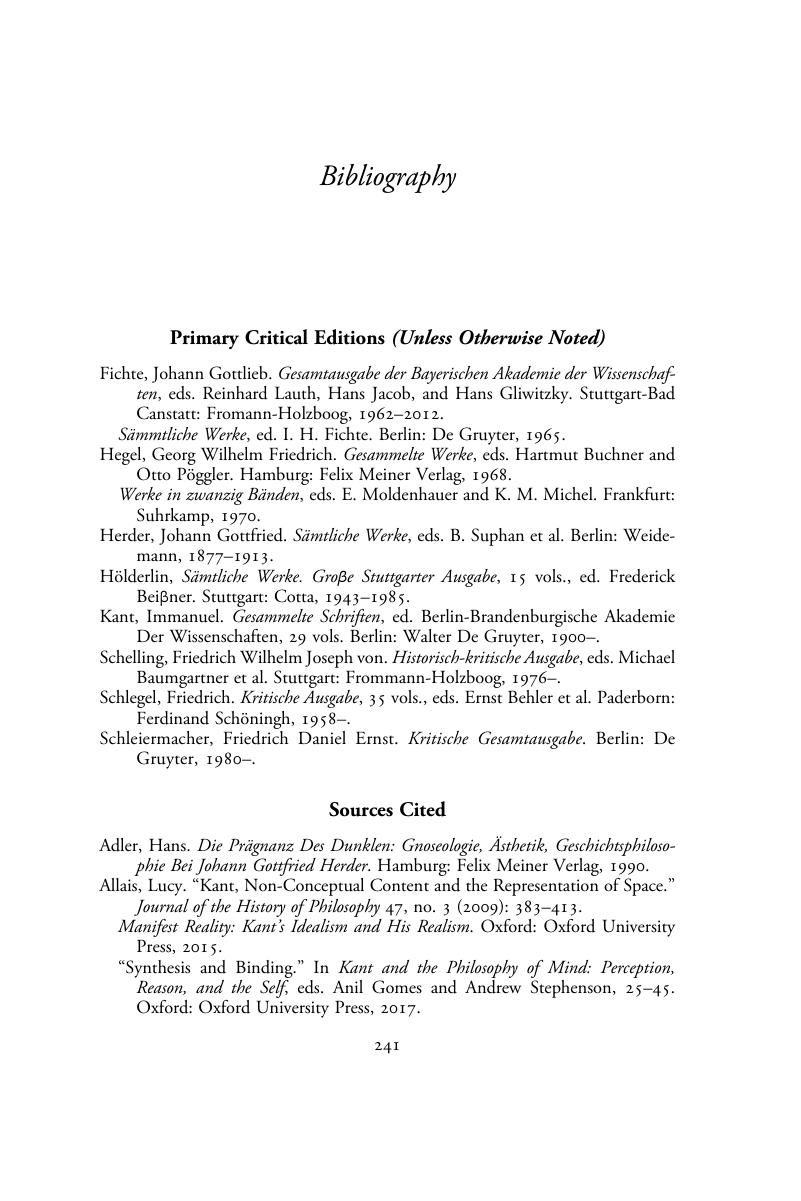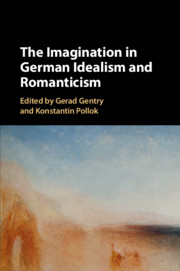Book contents
- The Imagination in German Idealism and Romanticism
- The Imagination in German Idealism and Romanticism
- Copyright page
- Dedication
- Contents
- Contributors
- Acknowledgments
- A Note on the Cover Image
- Introduction to the Significances of the Imagination in Kant, Idealism, and Romanticism
- Part I Kant and the Imagination
- Part II The Imagination in Post-Kantian German Idealism
- Part III The Imagination in German Romanticism
- Bibliography
- Index
- References
Bibliography
Published online by Cambridge University Press: 04 June 2019
- The Imagination in German Idealism and Romanticism
- The Imagination in German Idealism and Romanticism
- Copyright page
- Dedication
- Contents
- Contributors
- Acknowledgments
- A Note on the Cover Image
- Introduction to the Significances of the Imagination in Kant, Idealism, and Romanticism
- Part I Kant and the Imagination
- Part II The Imagination in Post-Kantian German Idealism
- Part III The Imagination in German Romanticism
- Bibliography
- Index
- References
Summary

- Type
- Chapter
- Information
- The Imagination in German Idealism and Romanticism , pp. 241 - 257Publisher: Cambridge University PressPrint publication year: 2019



